- Destinations
- Travel Styles
- About Us
- Contacts
- Destinations
- Travel Styles
- About Us
You have likely seen pictures of the amazing tuk-tuks running through the streets of Laos, but certainly, you have wondered why these three-wheelers are loved by both locals and tourists alike in this Southeast Asian country. For many, tuk-tuks are not a means of transport between point A and point B but are actually a sense of adventure in urban culture. Compact and efficient, they glide easily through narrow streets, making every ride an experience as impressive as the culture they represent. Let's discover the fascinating tuk-tuk and the tales it has to tell along the highways of Laos.
Tuk-tuks, which thrive on every corner in Southeast Asia, have directly integrated into local transportation in Laos. Out of all the known three-wheeled means of transportation, these are the most brightly decorated and equipped at the back with a canopy to shelter passengers from the sun or rain, with a capacity to carry typically 4 to 5 people. Their Thai origin does not negate the fact that they are also popular in Laos, where they bear the same name "tuk-tuk" alongside local vernaculars, such as "jumbo" or "samlaw".
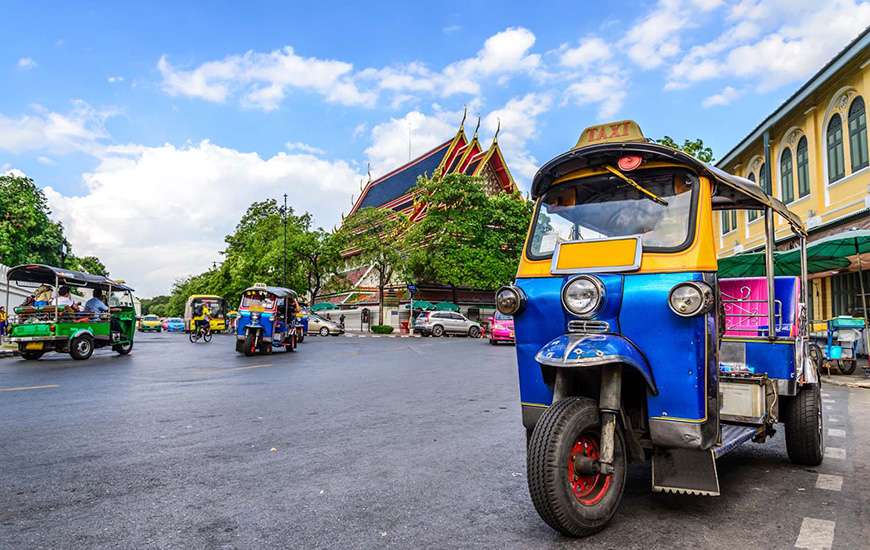
Well, the word "tuk" spelled "tuk," combined with "tuk," becomes "tuk-tuk," as the rhythmic sound its engine makes while the vehicle is moving can be referred to by this name. This onomatopoeia stems from the two-stroke engine, which is often fitted into tuk-tuks; in Thai, it is often transcribed with a soft initial consonant between "t" and "d."
Life in Laos is not just about using tuk-tuks but also includes a hint of culture and a means of navigating the narrow streets of cities like Vientiane and Luang Prabang.
The tuk-tuk as an object has been embraced, especially in cities like Vientiane and Luang Prabang, where it has become more than mere transport and, indeed, an icon. They originated in Thailand, where they were simply modified rickshaws. Here in Laos, they have gone further by making adaptations that suit their context.
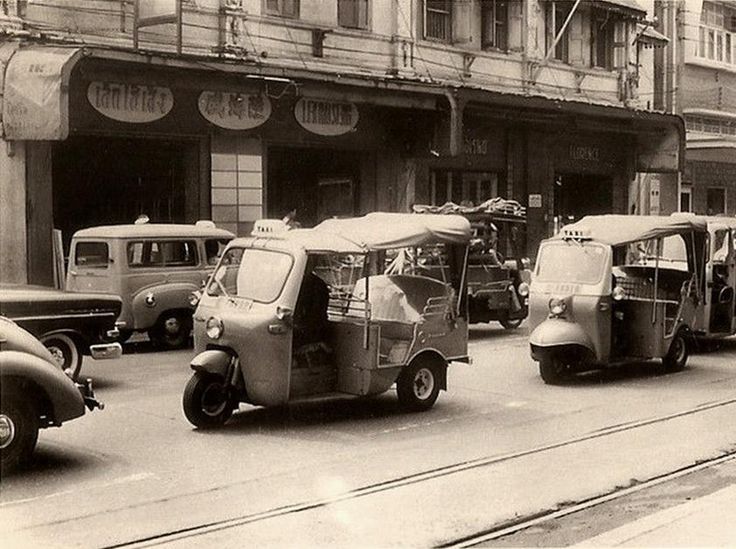
Tuk-tuks are an inexpensive means of transport available every day for people traveling around. They offer a sense of open-air immersion in Laotian street life. For most visitors, this makes it the mode of choice when seeking to indulge in an authentic cultural adventure. It's also a vehicle designed to navigate narrow streets and carry a considerable number of passengers, making it suitable for both populous urban areas and rural settings. They are, however, still used in day-to-day activities, such as transporting goods, children to school, and monks to temples. It's that simple and remains a feature of everyday life.
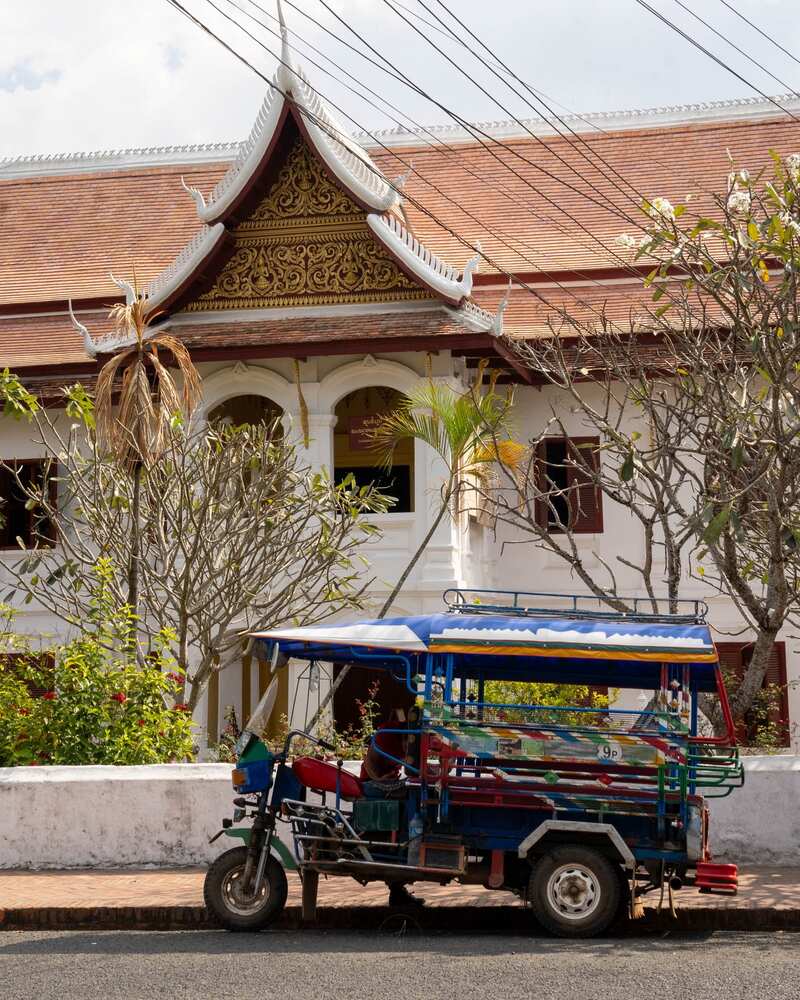
As it is used today, the tuk-tuk represents both convenience and cultural heritage for Laos. Telling the vibrant story of Southeast Asia, from the bustling streets of Vientiane to the crumbling alleys of Luang Prabang, these vehicles are not only used as a means of transportation but also speak of the creativity and adaptability found within the country. Indeed, tuk-tuks were always meant to be seen and heard—from locals commuting to work or taking tourists for a spin; they have made their mark as an institution and an endearing part of Laotian life.
Nothing typifies urban centers such as Vientiane, Luang Prabang, and other major towns in Laos more than the ubiquitous sight of tuk-tuks. Riding in one is very easy, as such small vehicles are everywhere and mostly available at street corners, ready to be flagged down.
To use one, get to the street and wave to a driver as he approaches; usually, he will stop to pick you up. Alternatively, you can walk up to him for price negotiation. Price haggling is normal, but with the adoption of ride-hailing apps like Grab or Loca (which is essentially Grab in the context of Laos), booking a ride has become much easier and more affordable. You do not need to haggle as the price is preset, and these apps also allow you to pinpoint your destination.

And speak to them; most tuk-tuk drivers are friendly and willing to share a little information about their city. Some may even take you on a personalized tour of local attractions, including hidden treasures that may not appear in guidebooks. Tuk-tuks are rather rare outside major cities, so one may want to consider other options for traveling when venturing into rural areas.
>>> Read More: Best Ways to Travel from Vientiane to Luang Prabang in 2025
In general, the usage of tuk-tuks in Laos should be sweetened by these practical tips. Avoid rush hours in Vientiane: traffic jams rip-roaring from 7 am to 9 am and from 4 pm to 7 pm will wear out any travel during these busiest hours. Even as the hours shift from business time to off time, movement during peak hours often means stress and, even worse, disputes over taxi fares.
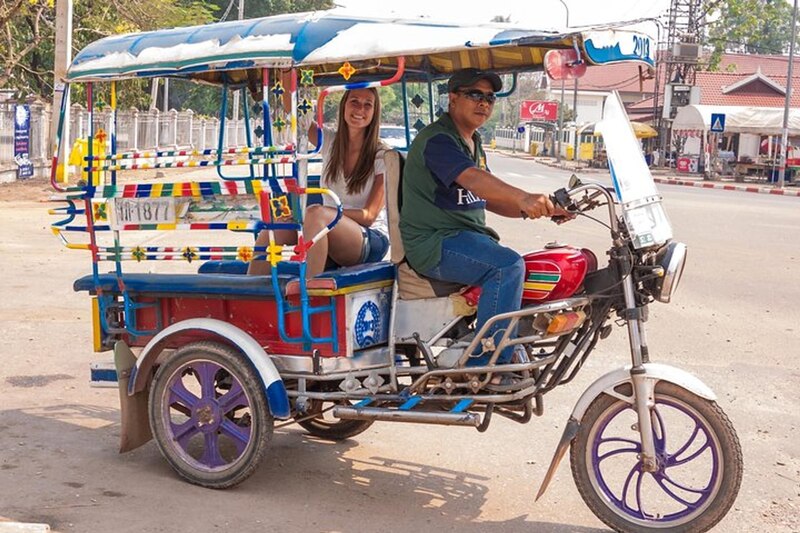
Prices around tourist attractions are often inflated, so it’s important to negotiate carefully. Since tuk-tuks lack meters, fares depend on your negotiation skills. Always agree on the price before boarding, and haggle as much as you feel comfortable. If unsure about typical fares, ask locals for guidance.
Watch out for offers of unusually cheap or free rides from strangers, as these often involve unsolicited stops at shops or tourist spots where the driver earns a commission. Politely decline such offers if you prefer a direct route.
🙏 👋 Learn a few words to communicate with the Laotians:
>>> 🌇🚤🌴 Explore North to South Laos in 2 Weeks! Cities, jungles, temples.
While there are several factors that affect the cost of tuk-tuk rides in Laos, the most important factor is the one determined by the driver, as there is no meter like in taxis. They usually haggle before the trip, and for small trips, such as point-to-point rides within central Vientiane that connect sites like Wat Si Saket or Pha That Luang, prices typically start at around 15,000–45,000 LAK (around $1.50 to $4.50).
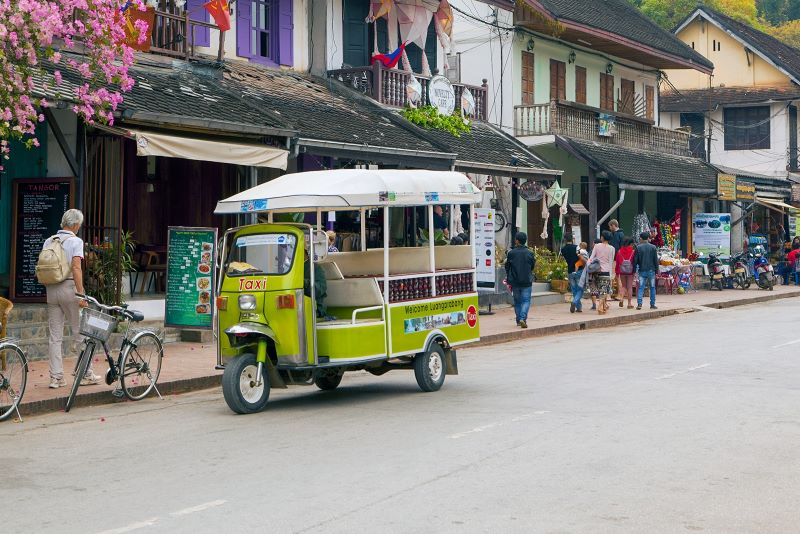
For longer trips, rides in heavier traffic, or journeys to destinations outside the main city hub, these fares can rise to 60,000–90,000 LAK ($6 to $9) or more, so competitive negotiations become very important.
Good to know:
Although credit cards are increasingly accepted in tourist areas, it is recommended to carry cash with you in Laos, especially for the payment of tuk-tuks, as some only take cash, especially in less crowded areas.
>>> Read More: Laos Currency and Credit Cards
In Laos, the word "tuk-tuk" is a general term for three-wheeled vehicles with or without an engine. However, each of these vehicles also has a local name. Below are five popular types of tuk-tuk in Laos and their corresponding local names.
These are tuk-tuks, one-piece vehicles, with the steering of motorbikes and a tank at the front, mounted on the back for covered seating. This is a rear-wheel-drive motorbike without brakes on the front. It can comfortably hold up to eight passengers (or more if you're willing to get cozy with a fellow passenger). They are classically painted in stripes of blue, red, and yellow, along with colorful landscapes painted on the sides.
.jpg)
The Jumbo is a long-favored aircraft for Lats. Very similar in design and cosmetic appeal as Skylab above, but smaller and a little less powerful engine, it has both front and rear brakes which you know for sure would squeal across town.
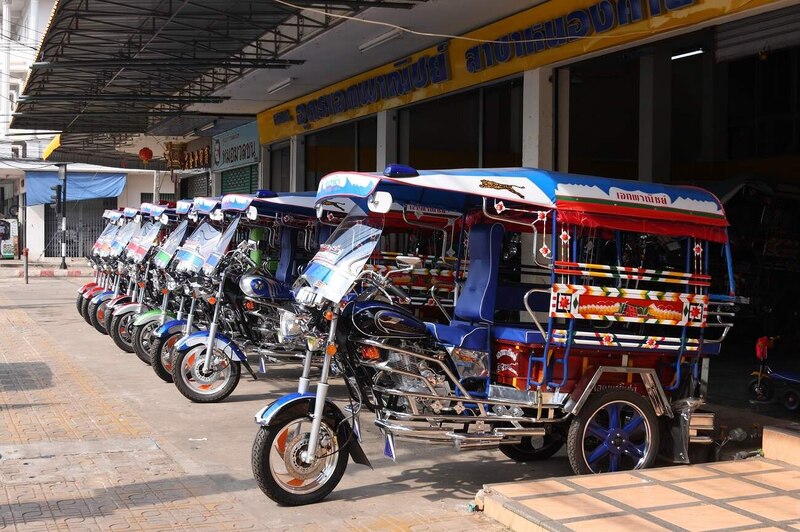
A pickup or small truck is a vehicle that has a partially enclosed back and has benches along the two sides. Mainly, they are used to carry passengers for longer journeys from one city to another along an assigned route; the passengers can get on or off at their convenience. Large volumes of luggage and goods can also be carried in these vehicles.
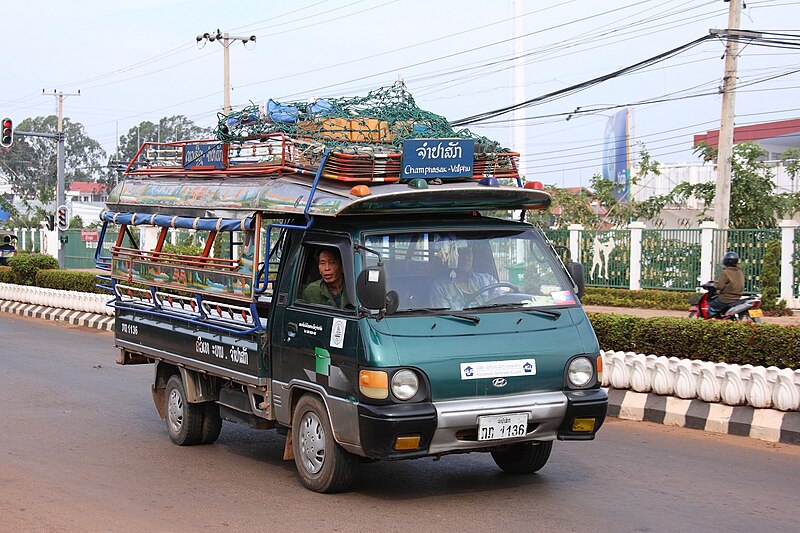
These are usually standard motorbikes with an attached covered sidecar for seating two passengers facing forward. Popular at one time in Luang Prabang, Pakse, and other regional centers, these motorbikes are gradually losing ground.
.jpg)
Old-style pedal bicycles with a cart at the rear that can seat two narrow-hipped passengers are now rare on the streets of Laos. However, a few antique ones are being revived for use.
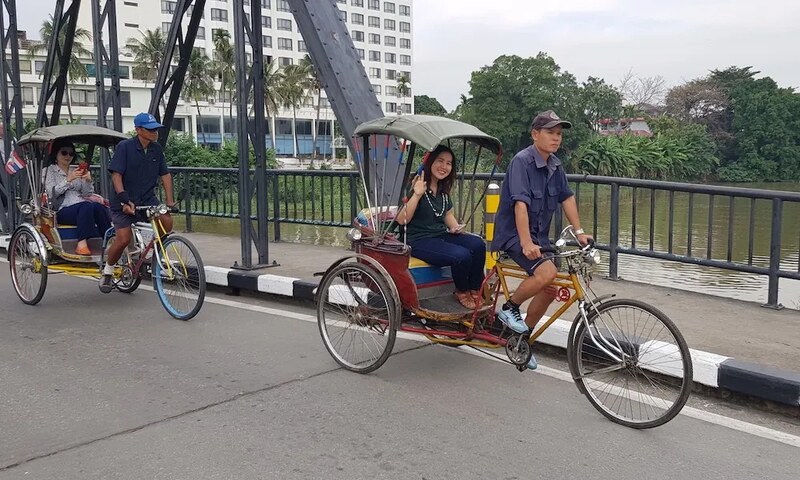
>>> Learn more: How to get around Laos?
The tuk-tuks in Laos are not just a form of transport but also real cultural concepts that have become symbols of the country's fantastic streets. Their specific naming highlights decades of innovation in design and function.
Traveling by tuk-tuk is not just a trip for tourists. It is more like an experience of immersing oneself in the vibrancy that characterizes life in Laos. However, precautions should be taken to ensure the full worth of the experience.
>>> Read more:



 The Essentials
The Essentials The Essentials
The Essentials The Essentials
The Essentials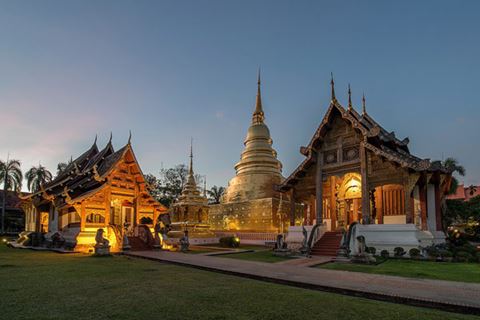 The Essentials
The Essentials